The 15 Species And Subspecies Of Critically Endangered Carnivora
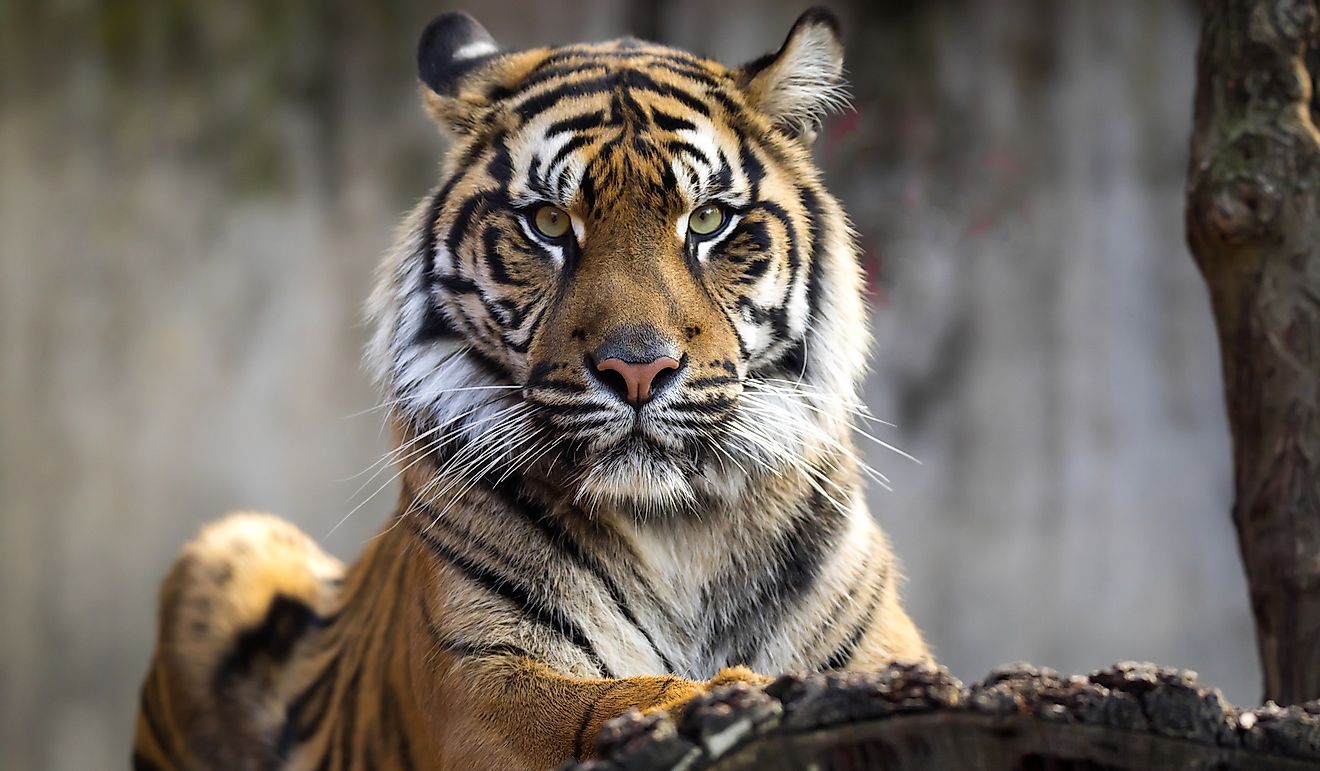
Carnivora is a scrotiferan order that is comprised of over 280 species of placental mammals. Species listed under the order Carnivora are uniquely adapted to catching and eating prey. Some are considerably social and are known to hunt in packs, which give them an advantage when bringing down larger prey, while others such as the leopard are more solitary. Some members such as pinnipeds and cats rely primarily on meat for nutrition, while other members like raccoons and bears are more omnivorous feeding on both animal and plant matter. There are currently about 15 species and subspecies of critically endangered carnivores. They include the Red wolf, Javan leopard, Amur leopard, Asiatic cheetah, Anatolian leopard, Malayan tiger, Balkan lynx, Sumatran tiger, Iriomote cat, South China tiger, Arabian leopard, Cozumel raccoon, European monk, and Northwest African Cheetah.
Red Wolf
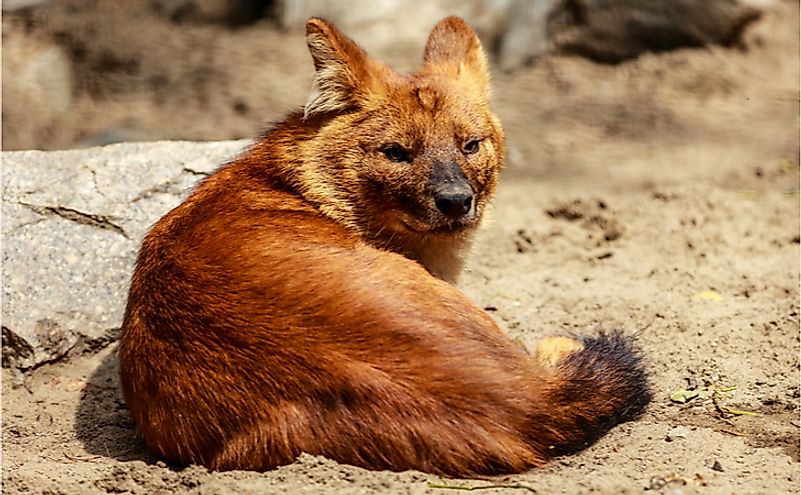
The Red wolf is scientifically known as Canis lupus rufus or Canis rufus. The species is endemic to the southeastern United States. Historically, the red wolf’s range extended throughout much of the southeastern United States from the Gulf of Mexico and Atlantic coasts north to the Ohio River Valley and Central Pennsylvania and west to southeastern Missouri and Central Texas. Due to their wide geographical distribution, the species most likely had several habitat types at any given point. The last wild population inhabited swamps, coastal prairie, and agricultural fields. Today, Red wolves that have been reintroduced to northeastern North Carolina live in forests, coastal prairies, swamps, and agricultural land. Their diet can vary depending on the available prey. They are known to hunt rabbits, raccoons, white-tailed deer, and other rodents. The red wolf is considered critically endangered by the IUCN.
European Mink

The European mink, which is also known as the Eurasian mink or Russian mink, is a semi-aquatic species endemic to Europe. It is also scientifically known as Mustela lutreola. The range of the species in the 19th century probably extended from northern Spain to the river Ob (east of the Urals) and from the north Caucasus to the Arkhangelsk region. Today the range has been reduced to north Spain, western France, Estonia, Latvia, Ukraine, Belarus, northwestern Bulgaria, the Danube delta in Romania, and the central regions of European Russia. European minks inhabit densely shaded banks of rivers, freshwater creeks, and lakes. Their diet consists of riparian and aquatic fauna, including voles, frogs, crustaceans, and fish. The European mink is currently classified as critically endangered by the IUCN.
Cozumel Raccoon
The Cozumel raccoon, which is also known as the pygmy raccoon and scientifically known as Procyon pygmaeus is a species endemic to the Cozumel Island 10.8 miles of the Yucatan Peninsula of Mexico. The species can be found in several habitats including sandy wetlands, mangrove forests, semi-evergreen forest, and agricultural land. Their diet consists of crabs, frogs, lizards, insects, and fruit. Cozumel raccoons are currently listed as critically endangered by the IUCN. Experts believe there are only 250 to 300 individuals left on the planet.
Malabar Large-spotted Civet
The Malabar large-spotted civet or Malabar civet is scientifically known as Viverra civettina. The species is native to the Western Ghats in India. Historically the species was found along the Malabar coast and inhabited the evergreen rainforests, wooded lowlands, and elevated forest tracts. Extensive deforestation significantly reduced their preferred habitat forcing the last remaining individuals into cashew and rubber plantations. Their diet includes small animals, eggs, and some vegetable matter. The Malabar large-spotted civet is currently listed as critically endangered on the IUCN red list.
Northwest African Cheetah
The Northwest African cheetah, which is also known as the Saharan cheetah, is also known scientifically as Acinonyx jubatus hecki. The Northwest African cheetah is a cheetah subspecies endemic to the Sahara desert and Sahel region. They are found in Algeria, Mali, Niger, Burkina Faso, Togo, and Benin. Algeria is thought to be home to most of the surviving population. Their diet consists of antelopes, Dorcas gazelle, addax, dama gazelle, and Rhim gazelle. Northwest African cheetahs are considered critically endangered by the IUCN. There are currently less than 250 mature individuals left.
Asiatic Cheetah
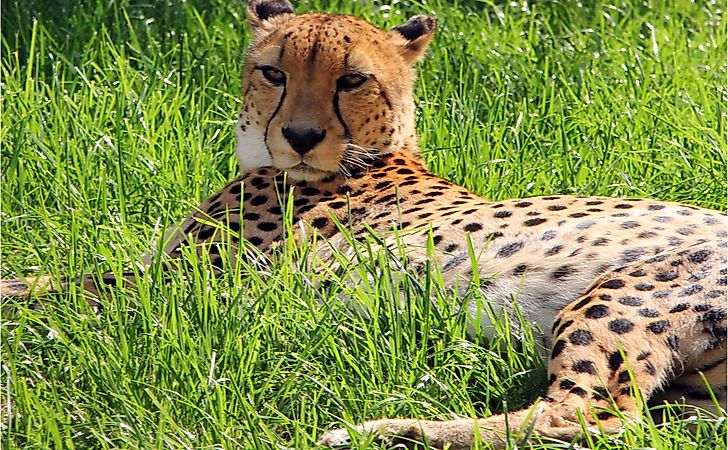
The Asiatic cheetah or Persian cheetah is scientifically known as Acinonyx jubatus venaticus. The Asiatic cheetah is a subspecies of the cheetah that is currently only found in Iran. Historically its range extended from the Arabian Peninsula and Near East to the Kyzylkum desert, Caspian region, Pakistan, and India. Today the Asiatic cheetah inhabits desert regions around the Dasht-e Kavir, including parts of Khorasan, Kerman, Yazd, Thran, Semnan, and Markazi provinces of Iran. A significant number of them are found in Touran National park, Nyabandan Wildlife Reserve, and Kavir National Park. Their diet includes goitered gazelle, chinkara, wild goat, wild sheep, and Cape hare. Asiatic cheetahs are listed as critically endangered by the IUCN. There are currently less than 100 Asiatic cheetahs remaining.
Learn more about the Asiatic Cheetah's conservation status in Iran, its last remaining home, in this article.
Balkan Lynx
The Balkan lynx is scientifically known as Lynx lynx. It is a subspecies of the Eurasian lynx. The subspecies is native to North Macedonia, eastern Albania, and southwest Balkans. They are also believed to exist in Greece, Montenegro, and Kosovo. They can be found in bush habitats and deciduous, evergreen mixed forests. Their diet consists of roe deer, brown hare, and chamois. The Balkan Lynx is considered critically endangered by the IUCN.
South China Tiger
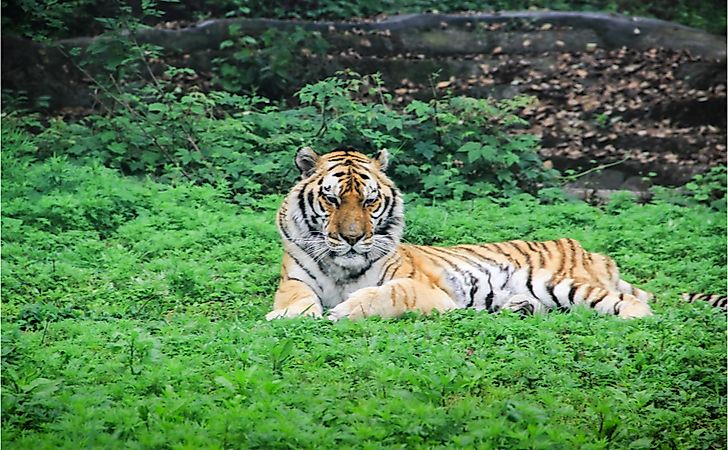
The South China tiger is also known as the Xiamen tiger, or Amoy tiger, and is scientifically known as Panthera tigris amoyensis. The South China tiger is believed to be a stem species from which all other subspecies evolved from. Today, the species is found in Central and Eastern China. They prefer dense jungles and enjoy spending time in the water. Their diet consists of small buck, monkeys, and birds. The South China tiger is currently listed as critically endangered by the IUCN.
Read more about the present conservation status of the South China tiger in this article.
Malayan Tiger
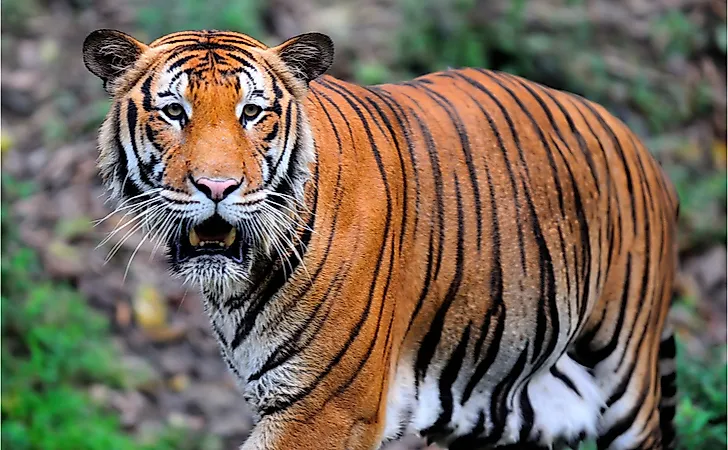
The Malayan tiger is scientifically known as Panthera tigris jacksoni. The Malayan Tiger is one of the smallest tiger subspecies. They can be found in the Malaysian states of Perak, Pahang, Kelantan, and Terengganu. Historically the tigers were also found in the states of Malacca and Perlis. They prefer dense tropical forests of the Malay Peninsula. They feed on wild boar, cattle, deer, bearded pigs, and tapirs. The Malayan tiger is listed as critically endangered on the IUCN red list. Experts believe that the remnant population currently consists of 250 to 340 adult individuals.
Sumatran Tiger
The Sumatran tiger, scientifically known as Panthera tigris sondaica is endemic to the Indonesian island of Sumatra. They are found in the Bukit Barisan Selatan National Park and the GunungLeuser National Park. The tigers inhabit areas with lowland and mountain forests. The diet mainly consists of pig-tailed macaque, great argus, Malayan porcupine, Sambar deer, Indian muntjac, and Malayan tapir. Sumatran tiger is considered critically endangered by the IUCN. In 2008, its population was thought to consist of between 441 and 670 individuals.
Arabian Leopard
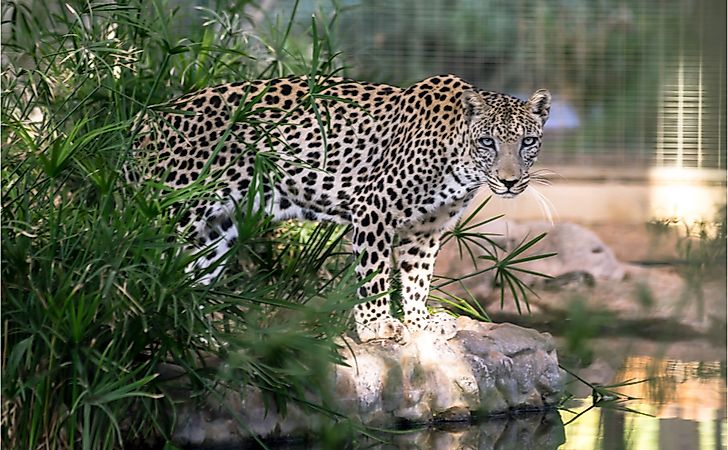
The Arabian leopard is scientifically known as Panthera pardus nimr. The Arabian leopard is a smaller subspecies of leopard compared to its African cousins. They are endemic to the Arabian Peninsula and can be found in countries such as Yemen, Oman, Israel, and UAE. They inhabit mountainous uplands and hilly steppes. They rarely venture into open plains and deserts. Their diet consists of mountain goats and foxes. Arabian leopards are currently listed as critically endangered by the IUCN.
Javan Leopard
The Javan leopard is found on the Indonesian Island of Java. It is a leopard subspecies that is scientifically known as Panthera pardus melas. The leopards can be found in the Gunung Halimun National Park, Gunung Gede Pangrango National Park, and Ujung Kulon National Park. They prefer living in dense tropical rainforest and dry deciduous forests. There have been sightings in secondary and production forests. Their diet consists of barking deer, Java mouse-deer, wild boar, Javan gibbon, and the crab-eating macaque. The Javan leopard is considered critically endangered by the IUCN. It is estimated that there are less than 250 mature individuals.
Iriomote Cat
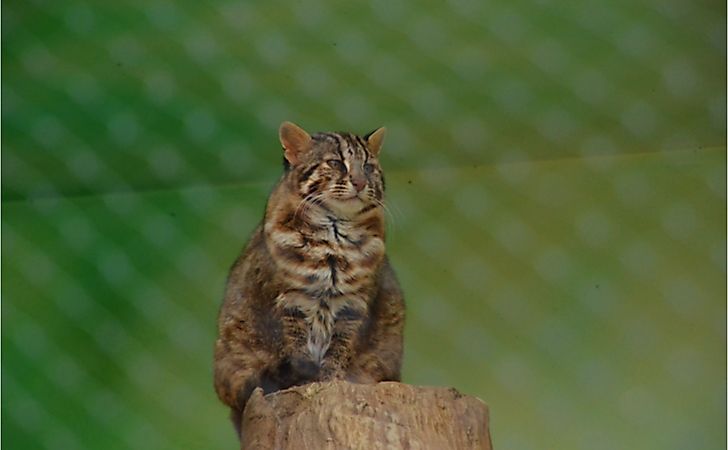
The Iriomote cat, scientifically known as Prionailurus bengalensis iriomotensis, is a subspecies of the leopard cat. The Iriomote cat is exclusively found on the Japanese island of Iriomote. The subspecies lives in the subtropical forests that cover the island. They prefer places with low humidity, forest edges, and areas close to rivers. Their diet consists of black rats, Ryukyu flying foxes, reptiles, birds, crustaceans, amphibians, and fish. The Iriomote cat is classified as critically endangered by the IUCN.
Anatolian Leopard
The Anatolian leopard is a subspecies of leopard that is found in southwest Asia. The subspecies is also scientifically known as Panthera pardus tulliana. Anatolian leopard is endemic to Turkey. They can be found in the forest and hilly areas of the Aegean, East Anatolian, and Mediterranean regions. The region consists of mountain chains of the Taurus Mountains, which means that their habitat consists of steep terrain. Their diet consists of wild goat, wild boar, chamois, deer, Caucasian grouse, and European hare. The Anatolian Leopard is considered critically endangered by the IUCN.
Amur Leopard
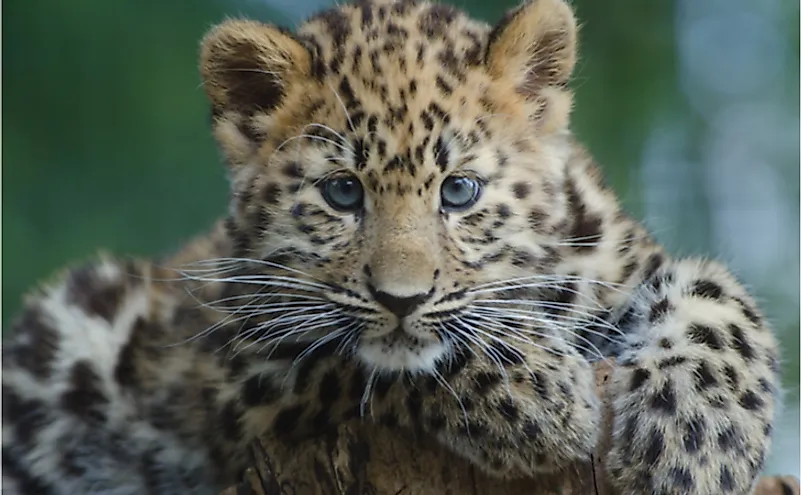
The Amur leopard is scientifically known as Panthera pardus orientalis. It is a leopard subspecies native to northern China and the Primorye region of southeastern Russia. They inhabit areas with Korean pine and broadleaved conifer forests. Their prey consists of Siberian roe deer, Manchurian wapiti, Manchurian sika deer, Amur moose, Eurasian badger, and Ussuri wild boar. The Amur Leopard is currently listed as critically endangered by the IUCN.
Conservation
Critically endangered carnivores are facing a high risk of extinction due to habitat loss, a reduction of preferred prey, and conflict with humans. Different countries around the world have established protected areas in order to save various species from extinction. In some cases, captive breeding and reintroduction are done for several species, including the Red wolf. Public awareness campaigns are also conducted to boost communal conservation efforts. For example, in Iran, the herder and cheetah training initiatives have helped educate the community about the plight of the Asiatic cheetah and have been successful in boosting communal wildlife conservation.











